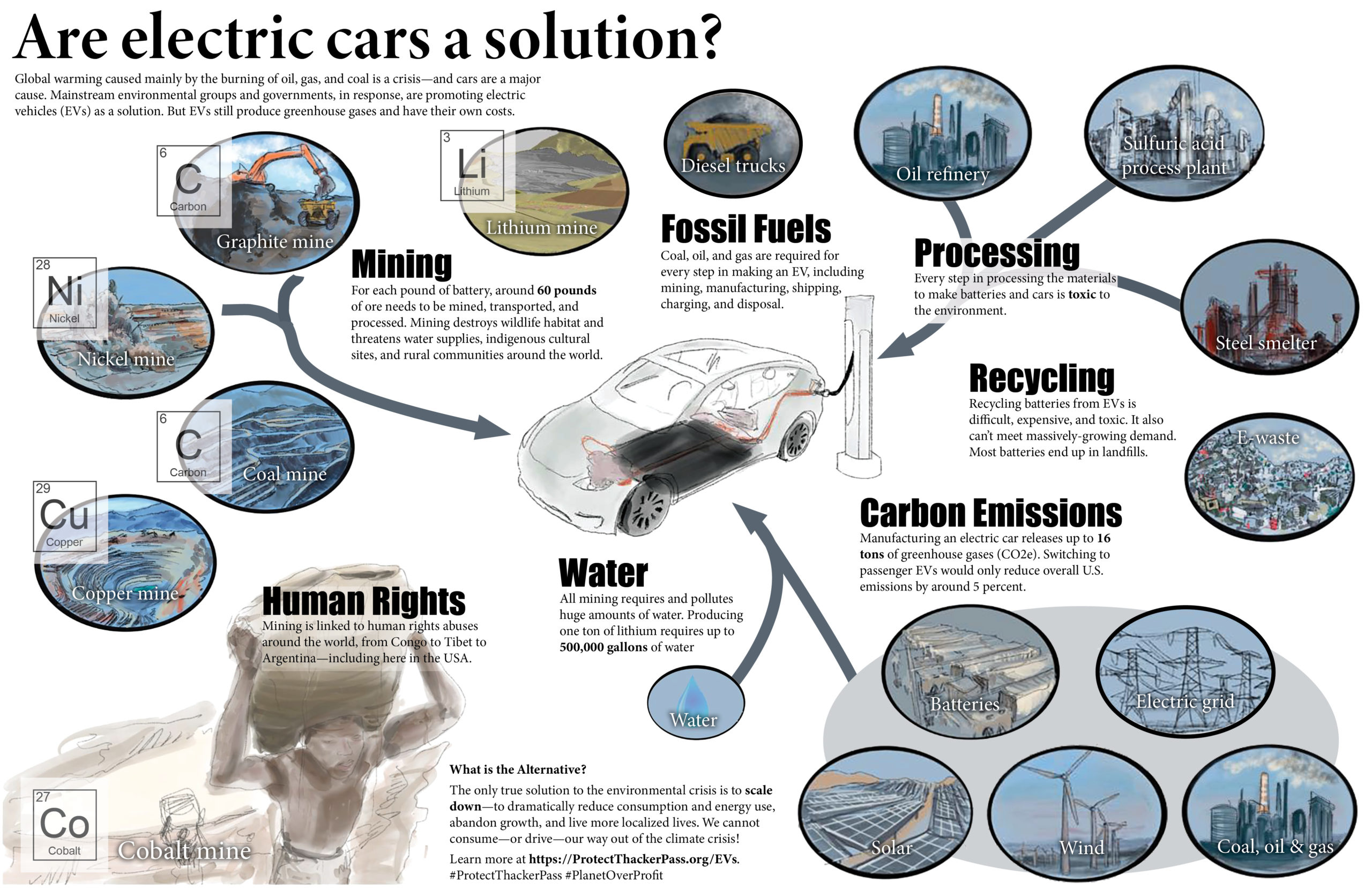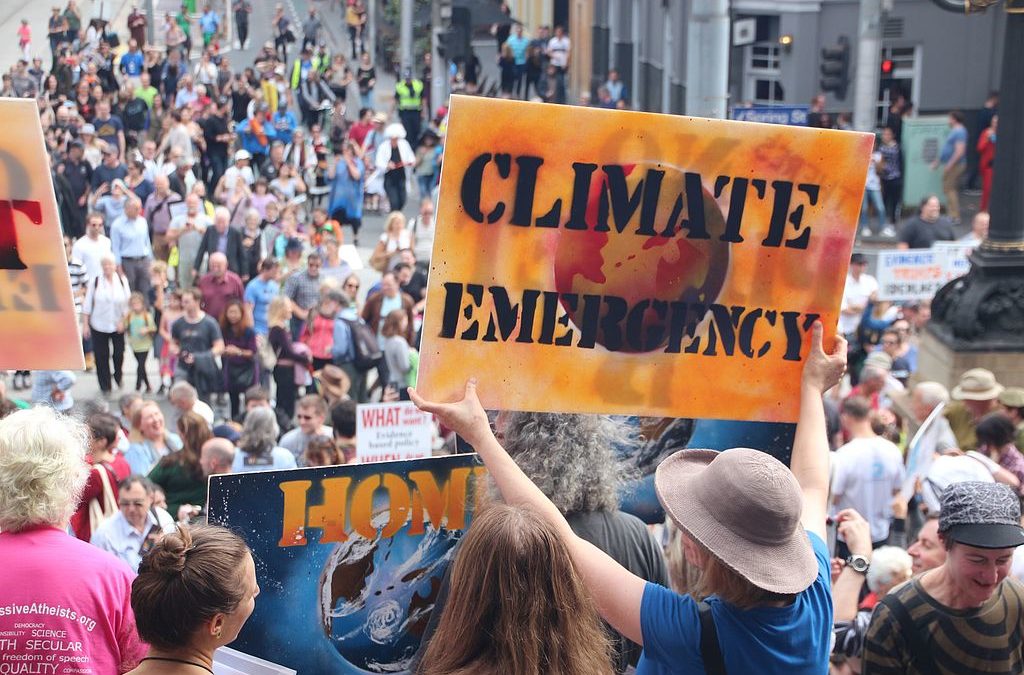“Climate emergency”. We hear these words regularly these days, whenever there is a wild fire, a flood, or an extreme weather event of any kind. We hear these words at the annual Conference of Parties (COPs) on climate change held by the United Nations Framework Convention on Climate Change (UNFCCC), including at the COP27 meeting happening right now in Egypt. And we hear these words regularly from organizations petitioning the U.S. government to “declare a climate emergency”, and from Senators requesting the same.
Most recently, here in the U.S., we heard these words on October 4, 2022 when a group of US Senators led by Senator Jeff Merkley (D-OR) urged President Biden to “build on the inflation reduction act” and “declare a climate emergency”, writing: “Declaring a climate emergency could unlock the broad powers of the International Emergency Economic Powers Act and the Stafford Act*, allowing you to immediately pursue an array of regulatory and administrative actions to slash emissions, protect public health, support national and energy security, and improve our air and water quality.”
The requests by these Senators include two related specifically to electric vehicles:
* Maximize the adoption of electric vehicles, push states to reduce their transportation-related greenhouse gas emissions, and support the electrification of our mass transit;
* Transition the Department of Defense non-tactical vehicle fleet to electric and zero-emission vehicles, install solar panels on military housing, and take other aggressive steps to decrease its environmental impact.
The Senators continue, “The climate crisis is one of the biggest emergencies that our country has ever faced and time is running out. We need to build off the momentum from the IRA and make sure that we achieve the ambition this crisis requires, and what we have promised the world. We urge you to act boldly, declare this crisis the national emergency that it is, and embark upon significant regulatory and administrative action.”
What the Senators are requesting is that President Biden invoke the National Emergencies Act (NEA) to go above and beyond what the Biden Administration has already done to take action in this “climate emergency” by invoking the Defense Production Act and passing the Inflation Reduction Act. This is not the first time a US president has been asked to declare a climate emergency by members of Congress, but it is the most recent.
Invoking the Defense Production Act, as the administration did in April, 2022, allows the administration to support domestic mining for critical minerals (including lithium, cobalt, nickel, and manganese, which readers of this blog will recognize as essential ingredients in batteries for EVs and energy storage) with federal funding and incentives in the name of national security.
The Inflation Reduction Act, passed in August, 2022, codified into law support for domestic mining of 50 “critical minerals” to supply renewables and battery manufacturing. This law directly supports EV manufacturing by offering tax credits to car companies that use domestic supplies of metals and minerals above a certain threshold (40% to start).
We’ve already seen how the Biden Administration is using its powers under these two acts (the Defense Production Act (DPA) and the Inflation Reduction Act (IRA)) to encourage more domestic mining for “critical minerals” and the expansion of electric vehicles and charging stations. Mining companies are “celebrating”, as one journalist wrote, including Lithium Americas Corporation (LAC) whose CEO said of the IRA “We’re delighted with it.” Car companies getting support from the government to expand manufacturing, companies getting support for building out the EV charging networks, battery-making companies, and the Department of Defense must also be celebrating the infusion of government cash and the tax incentives coming their way.
The administration would have even more power to fund and incentivize mining, manufacturing, development and industry with the National Emergencies Act, or NEA. The NEA empowers the President to activate special powers during a crisis. These powers could include loan guarantees, fast tracking permits, and even suspending existing laws that protect the environment, such as the Clean Air Act, if the administration believes these laws get in the way of mining, manufacturing, and other industrial development required for addressing the climate emergency.
As described in the Brennan Center’s Guide to Emergency Powers and Their Use, in the event a national emergency is declared, such as a climate emergency, the “President may authorize an agency to guarantee loans by private institutions in order to finance products and services essential to the national defense without regard to normal procedural and substantive requirements for such loan guarantees” [emphasis added]. This authorization could occur, as stated in the NEA, “during a period of national emergency declared by Congress or the President” or “upon a determination by the President, on a nondelegable basis, that a specific guarantee is necessary to avert an industrial resource or critical technology item shortfall that would severely impair national defense capability.”
Included in the long list of requirements for a Department of Energy (DoE) loan guarantee, the loan applicant must supply “A report containing an analysis of the potential environmental impacts of the proposed project that will enable DoE to:
(i) Assess whether the proposed project will comply with all applicable environmental requirements; and
(ii) Undertake and complete any necessary reviews under the National Environmental Policy Act (NEPA) of 1969.”
In the event a climate emergency is declared, could the administration then be able to “authorize an agency to guarantee loans” to a corporation “without regard” for these requirements? If so, then a corporation could potentially skip the NEPA process currently required for a new mining project, and not bother to do an assessment about whether their project would comply with all applicable environmental requirements (e.g. requirements under the Endangered Species Act, the Clean Air Act, and the Clean Water Act).
In other words, a corporation could proceed with their project, such as a lithium mine, with little to no environmental oversight if the Administration believes the resulting products are “essential to national defense.”
We already know that the Biden Administration believes that lithium production is essential to national defense: they have explicitly stated this in their invocation of the Defense Production Act and in the Inflation Reduction Act.
Declaring a “climate emergency” would give the administration free rein to allow corporations to sidestep environmental procedures that are normally required during the process of permitting a project like a mine, resulting in more harm to the environment.
Aside from these technical details about the implications of declaring a climate emergency, we know that most organizations, including those participating in COP27 and the 1,100 organizations that signed a February 2022 letter to President Biden urging him to declare a climate emergency, are demanding actions that would further harm the environment, such as “maximiz[ing] the adoption of electric vehicles” and “transition[ing] the Department of Defense…to electric and zero-emission vehicles” as demanded in the Senators’ October 4 letter to President Biden.
While these actions may reduce some greenhouse gas emissions, neither of these actions will reduce other harms to the environment, because these actions require more extraction and more development. And neither of these actions will reduce greenhouse gas emissions at a scope large enough to solve the climate crisis. What the activists, organizations, and Senators crying out for the President to declare a climate emergency seemingly fail to understand is that the climate emergency isn’t the only emergency we face.
Industrial development, and more specifically, industrial agriculture, has caused a 70% reduction in wildlife numbers just since 1970. This is an emergency inextricably linked with and just as dire as the climate crisis, yet the Senators and organizations calling for a climate emergency don’t demand a reduction in overall industrial development, only a reduction in fossil fuels development.
Each year, 24 billion tons of topsoil are lost, due primarily to industrial agriculture practices and deforestation. In 2014, the UN estimated that if current degradation rates continue, all the world’s top soil could be gone within 60 years. This too is an emergency inextricably linked with and just as dire as the climate crisis, yet again, the Senators and organizations calling for a climate emergency don’t demand actions to rebuild and restore soil.
Industry, including the military-industrial complex, has polluted the entire planet with toxic levels of mercury, lead, PCBs, dioxins, forever chemicals such as PFAS chemicals, and micro- and nano-plastics. These toxics are in the water we drink, the food we eat, and the air we breathe—“we” being, of course, not just humans but all wildlife on the planet. Again, this is an emergency just as dire as the climate emergency.
More than 50 million gallons of wastewater contaminated with arsenic, lead, and other toxic metals flows daily from some of the most contaminated mining sites in the U.S. into groundwater, rivers, and ponds. Mining waste that is captured must be stored and/or treated indefinitely “for perhaps thousands of years,” as the Associated Press wrote memorably in a 2019 article on mining waste. Replicate this kind of mining waste pollution around the world, and obviously, this too is an emergency just as dire as the climate emergency.
There are many such emergencies. Humans, our industry, and our developments have destroyed half of the land on Earth, and one third of all Earth’s forests. 60% of all mammals on Earth are now human livestock, mostly cattle and pigs, and 70% of all birds are now farmed poultry. This along with the staggering loss of wild beings due to human development and the destruction of habitat has resulted in the sixth mass extinction of life in Earth’s history—the only one caused by us.
All of these emergencies are related to climate change, of course. The more our societies develop, the more harm we do to the natural world, including the atmosphere.
“Development” is really global technological escalation by industry to extract more materials more efficiently, destroying more of the planet in its relentless theft of “resources.” The more our societies develop, the less habitat for life is left, and the more we overshoot the ability of the Earth to sustain us and the rest of the species on Earth.
We ignore these other emergencies at our peril. Indeed, ignoring them in favor of the climate emergency often exacerbates these emergencies. When the organizations mentioned above demand increases in electric vehicles, increases in batteries, increases in renewables, and increases in climate mitigation and adaptation (building sea walls, retrofitting and improving roads and bridges, moving entire cities), what they are demanding is more development, not less, which means more harm, not less, to the natural world. For instance, we know that the materials required to supply the projected battery demand in 2035 will require 384 new mines. That’s to supply the materials just for batteries.
Ultimately, what most organizations that support declaring a climate emergency want is not to protect life on this planet, but rather, to protect this way of life: the one we’re living now, the one that’s killing the planet. These organizations believe that we can simply replace CO2-emitting fossil fuels with EVs and so-called renewables, and keep living these ecocidal lifestyles we have become accustomed to.
We know this to be true, because we can see it directly in the actions already taken by the Biden administration, actions that will dramatically increase mining in the U.S. Mining increases the destruction of the natural world, meaning MORE habitat loss, not less. Mining increases toxic pollution. Mining increases deforestation. Mining increases top soil loss. In other words, these actions will significantly worsen all the emergencies we, and all life on the planet, face.
Rather than demand governments around the world declare a “climate emergency,” we could instead demand governments around the world declare an “ecological overshoot emergency.” In place of demands to increase industry, increase mining, and build new cars and new energy infrastructure, we could instead demand governments reduce industry, end mining, help wean us completely away from cars, and dramatically reduce energy extraction, production, and consumption. In place of demands to continue a way of life that cannot possibly continue much longer, with its relentless destruction of the natural world, we could instead demand that all societies around the world center what makes life possible on this planet: flourishing and fecund natural communities, of which we could be a thriving part, rather than dominate and destroy.
Join us and help Protect Thacker Pass, or work to defend the wild places you love. We can’t save the planet by destroying the planet in the name of a “climate emergency.”
~~~
* In their October 4 letter to President Biden, the Senators mention how invoking the NEA could “unlock the broad powers of the International Emergency Economic Powers Act and the Stafford Act.” The International Emergency Economic Powers Act (IEEPA) authorizes the president to regulate international commerce after declaring a national emergency, for instance by blocking transactions with corporations based in foreign countries, or by limiting trade with those foreign countries. This would, like the IRA, incentivize building domestic supply chains and manufacturing capabilities. The Stafford Disaster Relief and Emergency Assistance Act encourages states to develop disaster preparedness plans, and provides federal assistance programs in the event of disaster. In the event of an emergency, such as a declared climate emergency, the President could direct any federal agency (e.g. FEMA) to use its resources to aid a state or local government in emergency assistance efforts, and to help states prepare for anticipated hazards. In the event of a declared climate emergency, this would unleash federal funds and other incentive programs to states to build and harden infrastructure that is vulnerable to wildfire, floods, severe storms, ocean acidification, and other effects of climate change.
Image: Source is Climate emergency – Melbourne #MarchforScience on #Earthday; author is Takver from Australia. Via Wikemedia Commons (Creative Commons Attribution-Share Alike 2.0 Generic license



Excellent article, Elizabeth. “emergency” too-often used as a fear-based agenda.
Why was air pollution barely in the news before the corona-virus? An educated guess-answer says: something to do with the industrialized world economy.
“The research by Lelieveld et al (2019) published in PNAS is a comprehensive recent study of indoor and outdoor air pollution: The authors estimate that in total 8.8 million die prematurely due to air pollution every year. This most comprehensive measure of the death toll includes the air pollution from anthropogenic and natural sources of air pollution, such as desert dust.” (https://ourworldindata.org/data-review-air-pollution-deaths)
And rather amazing about “1,100 organizations that signed a February 2022 letter…”